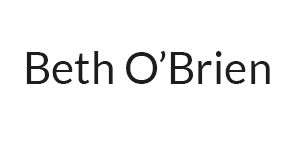In a little park at the entrance to the Williamsburg Bridge in Brooklyn, New York, there are often kids rolling around on skateboards, bikes and scooters. Looming overhead is an equestrian statue of George Washington at Valley Forge, swathed in blankets and sitting proudly on a horse with bowed head.
One summer afternoon I set my camera on a tripod near the monument. I sat for hours collecting sequential still photographs of teenagers on skateboards, skating the length of the monument and attempting to land tricks off the end of the granite steps. The idea was to capture movement in the same fashion as a motion picture camera, but in a more controlled, yet simplified and reduced, fashion. Instead of a mechanical and precisely spaced 24 frames per second, wherein the specific frames captured are dictated only by a multiple of time beyond the precise moment when the record button was pushed, I chose which moments to capture by pressing the shutter release. In this way, I reacted to the events occurring in front of the camera, choosing moments to highlight within a more fluid string of movement. And the resulting video composed from a slow presentation of the sequential images highlights the nature of the filmic illusion by emphasizing that the movement captured is merely a collection of still photographs strung together.
While composing the video, I thought of each photograph as a note and each sequence of a skater passing by as a melody. Each parameter I could change – such as opacity, speed and layering – was analogous to tone, pacing and volume in a musical composition. I was also inspired by the idea of counterpoint, creating melodies that worked singularly as well as within the larger composition and maintained their integrity internally while shifting in relation to each other.
The video is constructed in three movements. The first two movements are improvisational. I tweaked and changed any and all of the parameters of each skater in relation to the others, paying attention to creating smooth transitions and a balanced frame. I played with opacity to highlight some images while allowing other to recede.
In the third movement, each skater is continuously looped, each photo in each sequence comprising exactly 12 frames. The sequences range from three to eleven photos long. The choices I made were when to begin and end the continuously looping sequence, and when to leave a still image lingering on screen, like a held note or an after-image marking the exact place a skater has traversed. I also decided how to layer them, occasionally deciding to layer in a non-realistic manner, allowing a skater that should have been behind to instead appear in front. After building up the overlapping images to fill the screen, the skater rolling right to left – whose five images keep time like the ticking of a metronome – begins to slowly subtract from the cacophony, clearing the frame back to its original emptiness.
I often work this way – first collecting imagery in a documentary style, from unscripted and minimally directed life, and then using the images as both a starting point and a source of inspiration on how to proceed, ending with a piece that can no longer be called documentary. I am interested in this area of creative work, residing somewhere between the factual/real and the fantastic or constructed. Though “Skaters” may fall clearly on the fantasy/fiction end of the spectrum, I often ask myself this question: Where, in the whole manipulative process of digital photo finishing, is the line that distinguishes documentary from fiction?
As I juxtapose and collage, creating works that are non-realistic or non-naturalistic, themes emerge that are based in reality, in truth. In so closely studying the movement of these kids at play, what developed was a meditation on the process of learning; on repetition and failure; on play as an essential element of growth – creative, physical and psychological; on the space we inhabit and share; on individuality and commonality. I think of my working style as part documentary, part discovery, part interpretation and part fantasy.
